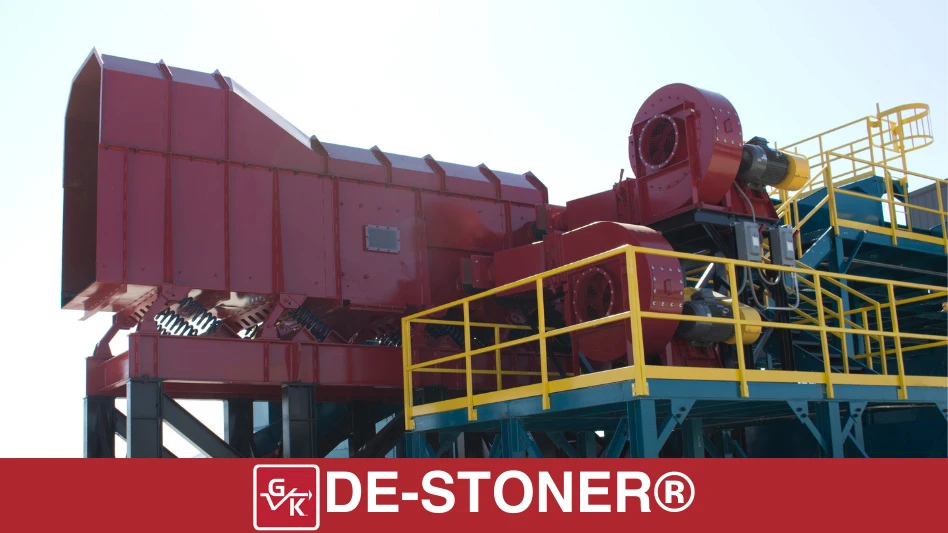
The Willow Run Powertrain Plant, located in Detroit, was once considered one of the largest manufacturing facilities of its time. Constructed in 1941, the plant spread across 321 acres with 4.8 million square feet of combined offices, manufacturing, warehouse and support facilities.
The original purpose of the Willow Run facility was to build heavy bombers during World War II, housing around 15,000 employees. In the five years the facility was used as a bomber plant, more than 8,800 aircraft were produced at the rate of one per hour—a significant increase to the one per month that the U.S. usually produced at this time.

During this time, about a third of the employees building the bombers at Willow Run were women who inspired what now is the feminist icon known as Rosie the Riveter.
After the war, the plant was purchased by Kaiser-Fraser, an automobile manufacturer that also produced C-119 and C-123 planes during the Korean War. Kaiser-Fraser ceased production in 1953. Later that year, General Motors (GM) purchased the facility to manufacture automobile transmissions, which included operational activities such as machining, cleaning and painting of metal parts and products. GM stopped operations at the Willow Run Powertrain Plant in 2010.
In September 2013, 75 years after its construction, MCM Demolition, Bloomfield Hills, Michigan, was selected as the contractor to demolish the building. During the demolition process, Rapid Recovery, Phoenix, recovered an estimated 7,664 pounds of refrigerant from the facility.
FROM TOP TO BOTTOM
John Thompson, the franchise owner and technician for the Detroit Rapid Recovery location at the time of the recovery project, recovered refrigerant from around 988 units throughout the facility in five months. The process began in September and ended in February.
“It was unusual because we haven’t done an extensive, lengthy project over a period of time,” Don Pankratz, senior regional director of Rapid Recovery, says. “We had to work with the contractor [MCM Demolition] and maintain a relationship with our other customers. John did a great job of both — he kept our customers happy and kept our contractor happy at the same time.”
According to Thompson, the assignment given by MCM Demolition was to stay ahead of the contractors and to recover the refrigerant safely and quickly on all floors of the plant. A mixture of high-pressure and low-pressure appliances were on Thompson’s recovering list, including roof-top units (RTUs), refrigerators, water fountains and window air conditioning units.
Since harsh Michigan winters were approaching, Thompson decided to start with the roof, working from the west end of the plant to the east.
“They had some really huge rooftop units where they’d cool an area used to test a car’s transmission,” he described.

At times, Thompson had to pull 600 feet of recovery hose through various parts of the facility to fulfill all the recovery requirements. Some chillers that needed to be recovered were as large as 300-ton low air pressure refrigerant.
In order to recover the refrigerant, Thompson used equipment developed by Rapid Recovery, including truck-mounted, gas-powered recovery machines that he called “el machino” and electrical-powered, low-pressure recovery machines. The high pressure units were recovered using the truck-mounted machines and took up about 95 percent of the job.
Low pressure appliances, such as big chillers that cool a manufacturing process or particular area of the plant that required cooling, small units used to keep electrical boxes or controls in a metal processing machine cool and air conditioners to cool down offices, were recovered using the electrical machines.
“It was a great experience for recovery because there were so many different pieces of equipment,” Thompson says. “Just about every known manufacturer was there and some old refrigerators from the 1940s as well.”
While the recovery process for a refrigerator from the 1940s doesn’t differ much from newer refrigerators other than the age of the refrigerant, it was challenging to get to some of the smaller units that were in more difficult positions, according to Thompson.
KEEPING UP WITH REGULATION
In order to communicate with MCM Demolition, Thompson placed Rapid Recovery stickers on each appliance he recovered refrigerant from.
This allowed the contractor to gather a report for the U.S. Environmental Protection Agency (EPA).

A consulting engineer also checked the abatements done by Rapid Recovery and other teams throughout Willow Run to make sure they were abating within the EPA guidelines.
“The job was to recover as much refrigerant as I could without having any escape,” Thompson said. “Regulations don’t say exactly how much a minimum release is, but we didn’t have any major issues.”
After it’s recovered, the refrigerant would be put into canisters and sent back to Rapid Recovery headquarters in Phoenix where it was processed and either resold, or if it was too old to be resold it was put into large tanks where it was destroyed through intense heat.
Thompson’s nephew, Mason Morell, joined Thompson as a technician on the project toward the end. But until then, Thompson worked on the recovery project alone.
“That speaks to the way we do recovery and the speed we can do recovery,” Pankratz says. “Some of the work was outside and in the winter months. They dealt with the cold and high winds and all the things associated with winter.”
A HISTORICAL PROJECT
About 150,000 square feet of the Willow Run Powertrain Plant was saved for a museum because of its historical past, Pankratz says. The facility was only built in six months.
“There were places in the plant where you’d see old graffiti, diagrams and posters,” Thompson says.
The ability to do a recovery project on so many different types of equipment from different eras of time — from the 1940s until the 2010s — allowed Thompson to gain new experience recovering refrigerant and to go back in time for a little while.
Since the recovery project, Thompson sold the Detroit Rapid Recovery franchise back to the company and is now a tire distributor.
“It was a neat job because of [the plant’s] history and to see what went into the plant after it was shut down by GM years and years ago,” Thompson says. “It was a trip both back in history, knowing it was a bomber plant at one time, and in how the manufacturing process has changed.”

Explore the January 2017 Issue
Check out more from this issue and find your next story to read.
Latest from Construction & Demolition Recycling
- Fleetio integrates Maintenance Shop Network add-in
- C&D World session preview: Key strategies for effective fleet maintenance
- Rotochopper hosts equipment owners at annual training program
- EAF mill underway in California
- On the move
- Viably teams with Turmec on materials processing systems
- Tight supply poised to keep recycled steel prices buoyant
- Untha shredder prepares SRF in the UK





